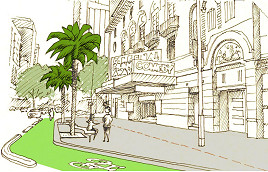Is street art dead?
People always tell me that there isn’t anything new in art and that painting is dead.
The idea of painting being dead always conjures up an image in my mind of a painting folded in half, with cadmium red flowing over the ground.
Art will never be dead; art is an important critique on contemporary society. And as long as humankind has existed it has always found a way to make its marks. Art has always had a unique way to express the social and political climate of the time.
Good art is of its time, but it is also timeless.
People often comment to me on the death of street art, claiming that it was at its peak in the early 21st century, when it was political, young, fresh, and new. This raises the idea that street art may have become a medium, like photography did in the very early 20th century. If this is the case, then street art, nu-muralism, stencil, and street sculpture could be here to stay.
But if it is a movement within the fine art genre, is there a possibility that it is ending?
Street art brings some important things to the fine art establishment.
Street art allows artists to express themselves in a way that is unrestricted by traditional art forms.
This freedom of expression allows artists to create works that are provocative, thought-provoking, and challenge the status quo.
Street art should be used to address social and political issues, making it an important tool for social activism.
Originally street art was about the democratisation of art. This was far more relevant early in the movement when it was young and punchy and youthful, and was created illegally, across the city, not just in the safety of the laneways.
It should also bypass the gallery model making it accessible to anyone. Street art works best in the street, once you put it in a gallery context you change its meaning and value, and it becomes disingenuous.
The death of street art may have been its monetisation. This allowed non-artists to dictate the content. To stay relevant, street artists must continue to evolve and adapt to the changing social, cultural and financial landscape.
The art must continue to push the boundaries of what is possible, experiment with new materials and techniques, and explore new themes and ideas.
The art must also continue to engage with the broader community, using nu-muralism and radical approaches to address social and political issues.
Street art may survive and even thrive as an artform forever, or could it be that its finished and will just become another important genre in the history of fine art? •

Council endorses office tower at Flinders Lane despite querying car park demolition




 Download the Latest Edition
Download the Latest Edition